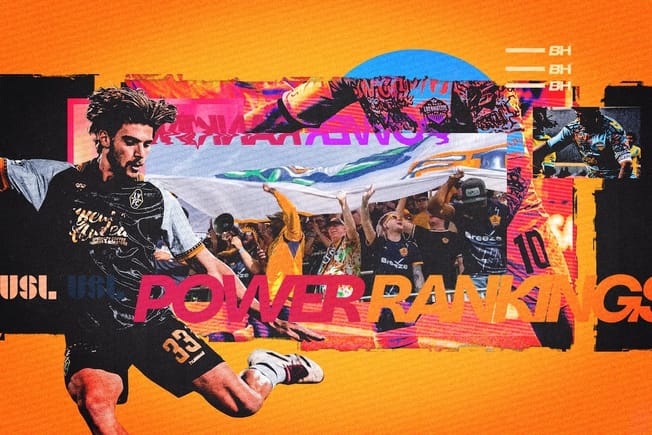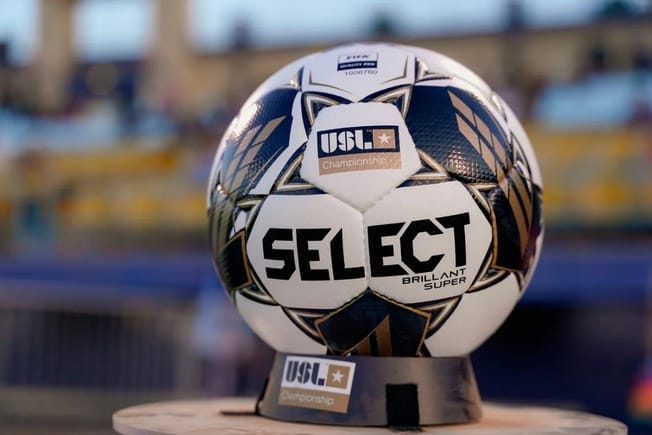Quick Hits
- With the playoffs underway in the USL Championship, it’s clear that many of the best USL teams are united by a commitment to managerial continuity
- Examining when to commit to a coach, how things go sour, and the struggles of new regimes helps highlight what it takes to build a winner in the USL
The top contenders in the USL Championship this year use vastly different tactical systems and represent disparate corners of the United States. Some play in converted baseball stadiums, while others enjoy soccer-specific stadiums. Still, even with these distinctions, many of the best USL teams are united by a commitment to one thing: managerial continuity.
First-year coaches in the second tier tend to struggle, while the clubs that commit to an identity over time are better off for it.
Consider the managers of the USL’s best teams in 2022. Alen Marcina wrapped up his third year at San Antonio FC with a league-best season in terms of points, but his involvement with the organization in some form dates back as far as 2012 in the NASL. Neill Collins played for the Tampa Bay Rowdies for three years and is now five seasons deep into his managerial stint. Landon Donovan is the only manager that the San Diego Loyal have ever known.
On the other end of the spectrum, the El Paso Locomotive missed the playoffs in John Hutchinson’s first season after finishing as the first seed in the Western Conference in 2021. Mark Lowry, one of the most respected managers in lower-league soccer, considerably underperformed expectations with Indy Eleven. MLS veteran Conor Casey couldn’t even last a full year with the Charleston Battery.
Continuity isn’t the only thing that matters, but it can go a long way in the lower divisions. Examining when to commit to a coach, how things go sour, and the struggles of new regimes helps highlight what it takes to build a winner in the USL.
In the spring of 2018, Neill Collins took over as the head coach of the Tampa Bay Rowdies. The club, in their second season in the USL, finished 12th in the Eastern Conference that year, lost in their first U.S. Open Cup match, and had all the signs of a team in transition. 2019 was an improvement, but it ended on a sour note. Tampa Bay improved to fifth in the East with a +28 goal difference, but they lost six of their last 12 games and bombed out of the playoffs.
That 2019 season was also the first full year of shared ownership between the Rowdies and the Tampa Bay Rays. It was a new era for the Rowdies, and it would’ve been understandable for the ownership to bring in their coach to align with a new top-down vision for the club. Instead, they retained the Scotsman. What made Collins a must-keep manager?
During Tampa Bay’s stretch of improved performances in 2019, Collins established a distinct brand of soccer. 2019 was his first season with a real say in transfers, and he was allowed to sign players who fit into his specific system. Tampa Bay transitioned from a four-man backline to the back-three that continues to bear fruit to this day. That second year let Collins show his tactical smarts and his ability to instill a philosophy, proving that keeping him around was the right choice.

In both 2020 and 2021, the Rowdies allowed fewer goals than any team in the USL and advanced to the title game in both of those seasons. This year, the team finished in the top 10 in terms of goals allowed, and Collins added a wonky, free-flowing 4-2-3-1 shape into his quiver of tactical arrows. Well-earned trust and continuity allowed the manager to forge a system, build on it, and lead Tampa Bay to consistent success.
Success doesn’t last forever, though, as Phoenix Rising illustrated this year. Rick Schantz managed Phoenix from the 2019 season until the middle of 2022. His stint began with a commitment to a high-pressing, high-possession 4-3-3. Schantz’s attack was based around dynamic wingers partnering with a hold-up striker, and Phoenix never finished below second place in the West during his first three years.
Still, continuity requires maintenance, something the Rowdies were aware of but Rising would learn that the hard way.
Maintaining a roster with well-selected personnel is vital. Tampa Bay continue to find new talent that fits into their proven system. Jake LaCava, a 21-year-old winger, is the new kid on the block in attack and his double-digit scoring carried the load while longtime stalwart Sebastian Guenzatti found his form as a No. 9. Goalkeeper CJ Cochran and defender Conner Antley also represent recent, astute additions that maintain Collins’ system.
Phoenix, by comparison, struggled to replace their core pieces. AJ Cochran, a ball-playing center back, and Junior Flemmings, a winger, both left before the 2021 season. James Musa returned to Arizona after an MLS stint to replace Cochran, but Musa rated in the 8th percentile for tackle win rate in 2021 and never truly found his form on the left side in 2022. Flemmings wasn’t replaced at all in a like-for-like sense, cutting down on Phoenix’s transitional speed.
Phoenix didn’t feel the effect of those losses right away – they did well in 2021, finishing first in their division. Losing striker Rufat Dadasov and winger Solomon Asante, a two-time MVP, before the 2022 season hurt. Phoenix added players to their attacking corps to replace those two, but the signings didn’t totally mesh with Schantz’s style. Striker Greg Hurst is a poacher rather than a physical presence a la Dadasov; Marcus Epps, already traded away, is a winger who needs space to run into on the counter in contrast to the tight control and rangy shooting offered by Asante in possession.
It’s official.
— Owain Evans (@ojevans18) October 9, 2022
Phoenix Rising will miss the 2022 playoffs.#RisingAsOne #RGVvPHX
Suddenly, the personnel didn’t match the vision in Phoenix. Schantz turned to midfield diamonds, unfamiliar back threes, and everything in between on the way to a midseason firing. The team struggled for visible on-field chemistry and their goalscoring dominance dissipated. According to multiple sources within the club, Schantz lost commitment from parts of the locker room along the way. If we learn anything from Phoenix Rising’s dip in form, it’s that it takes a deft touch to maintain success from year-to-year.
Still, there’s a balance to strike between consistency and change. In the last year alone, the Charleston Battery swung hard between the two extremes. Mike Anhaeuser managed the club from 2004 through 2021, providing stability and mediocrity in equal doses. His Charleston team famously reached the final of the U.S. Open Cup in 2008, but didn’t never advanced past the conference quarterfinals in any league campaign during the last eight seasons.
Anhaeuser stepped away before 2022, and former U.S. men’s national team player and Colorado Rapids assistant coach Conor Casey took charge in his first head coaching role. Where someone like Collins champions a specific style of play, Casey never showed that same clarity. The Battery began the year in a 4-4-2 with a diamond midfield and based their system around direct passing. More than 26% of their passes went long over the first six games, while no other club exceeded 20% in the same stretch.
The results just didn’t come during the first iteration of the Casey-era Battery, so he radically changed styles. Charleston adopted a 3-4-3 and focused on patient buildup play. Neither identity bore fruit, and the Battery languished near the bottom of the table all year long.
Casey was dismissed with a week remaining in the campaign.
The Charleston Battery and Head Coach Conor Casey have mutually agreed to part ways.
— Charleston Battery (@Chas_Battery) October 12, 2022
The club thanks Conor for his service and wishes him the best in the future.
You could argue that firing Casey so quickly was rash – after all, it took a manager like Collins time to settle in with the Rowdies. But it’s important to note that Charleston hired a new team president between Casey’s hiring and dismissal. Lee Cohen, the new president and a longtime Tampa Bay executive, has the experience to know what makes a successful coach in the USL and evidently didn’t see those qualities in Casey.
Maybe the next version of the Battery with their next coach will strike the right chord. Or, maybe Charleston’s quick trigger with Casey will prove detrimental.
This week, San Antonio and Louisville will make their way into the 2022 playoffs with longstanding managers at the helm. Marcina and Danny Cruz, who has been on Louisivlle’s staff since 2018, are the standard-bearers of continuity. San Antonio’s low-possession, counter attacking system and Louisville’s free-flowing high press have been honed over the years and supplemented with smart player acquisitions. They’ve found balance, just like Tampa Bay.
Keeping a coach for years isn’t a guarantee of title contention – see: Charleston – but it can set clubs on course toward that level of play. Looking ahead to 2023, teams like FC Tulsa and Hartford Athletic will have new managers and Indy and El Paso will gear up for a second season under their current ones. Who in that group can install a philosophy? Who will fail to do so, and how will their clubs respond?
Success is never guaranteed in the second division, and the team that chooses the right leader may just become the next stalwart at the top of the USL Championship table.







Comments